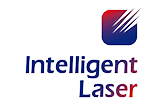In the current welding production process, different products usually need specific welding equipment and fixtures, and different types of production lines and production processes need to be designed. Even similar products usually need to change fixtures due to different models. At the same time, there are assembly errors in the assembly process of workpieces and machining errors in the machining process, which will lead to differences between the actual welded workpieces and the design drawings, and poor consistency of workpieces. For robot welding, simple teaching usually has a big error. Thermal deformation in the welding process will also cause errors, resulting in welding defects. The above problems are common in general industrial production, which requires the automatic welding production line to have the ability to accurately position the workpiece and correct the deviation. At the same time, in the welding process, it can detect the weld in real time, adjust the welding path, correct the welding deviation and ensure the welding quality. This can also greatly reduce the workload of operators, improve the welding efficiency, reduce the manufacturing cost and realize intelligent flexible manufacturing.
Development course of welding seam tracking technology
A key technology of intelligent welding is to realize automatic positioning and real-time tracking of workpieces and welds. In the early days, due to the backwardness of basic technologies related to detection and computer, it was difficult to realize the technology of welding seam positioning and tracking. The factory usually only designed and produced precise fixtures, and at the same time, it raised the requirements for assembly. However, for small batch production, this method was usually difficult to realize.
Since 1970s, the technology of welding seam location and detection has developed to some extent. There are two main developments. On the one hand, mechanical contact copying tracking has been developed. Mechanical copying tracking has a wear problem after a long time of use, and its accuracy is low, so its application is limited. It is usually used in scenes with low requirements for welding accuracy. On the other hand, based on the principle of arc sensing, researchers have realized real-time arc tracking and welding wire touch location. However, arc tracking usually requires the welded workpiece to be fillet weld and swing welding, which also limits the application scope of arc tracking.
After 2000, with the development of information technology, embedded processing technology, sensor technology and image processing technology, foreign researchers have made great progress in the field of non-contact real-time tracking, and formed the ability of productization. After 2010, enterprises, schools and scientific research institutions in China have gradually carried out in-depth research and development on non-contact welding seam tracking technology. At the same time, with the maturity and popularization of robot application, welding seam tracking technology has made a breakthrough development and gradually matured.
The laser structured light detection method based on the principle of triangulation is widely used because of its high contrast, high precision, strong real-time and non-contact. In practical use, there are many types of laser structured light, such as single-line structured light, multi-line structured light, circular and elliptical structured light, lattice and so on. Single-line structured light is the most widely used. The weld tracker based on single-line structured light has the characteristics of simple structure, good real-time performance and high cost performance. Now it has been used in the fields of weld tracking, weld locating and so on, and it is also the development direction of weld detection and tracking in the future.
Conclusion of welding seam tracking technology
Compared with other welding seam tracking technologies, the welding seam positioning and real-time tracking technology based on laser structured light has wider application scenarios and higher real-time and accuracy. In the future, welding seam tracking based on laser, especially 3D imaging technology, is bound to have a broader development in the field of intelligent welding.
